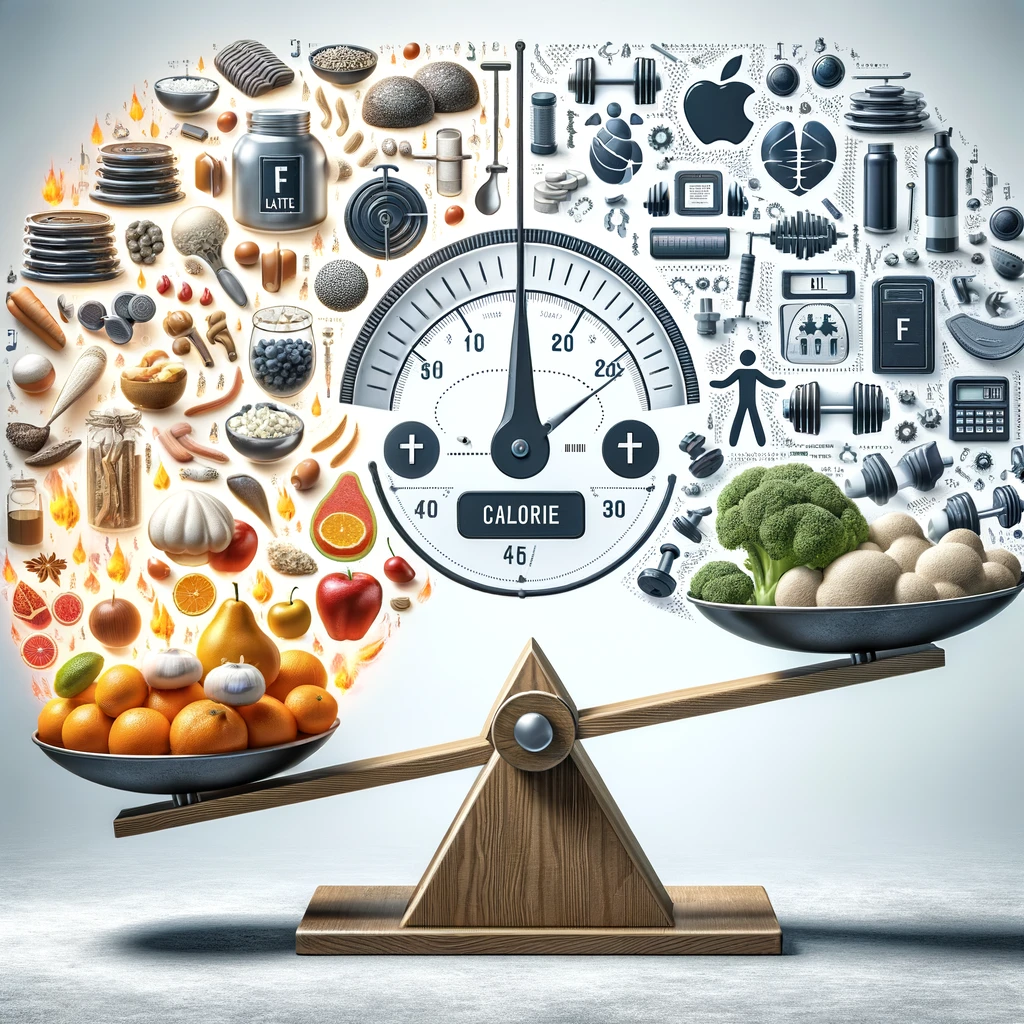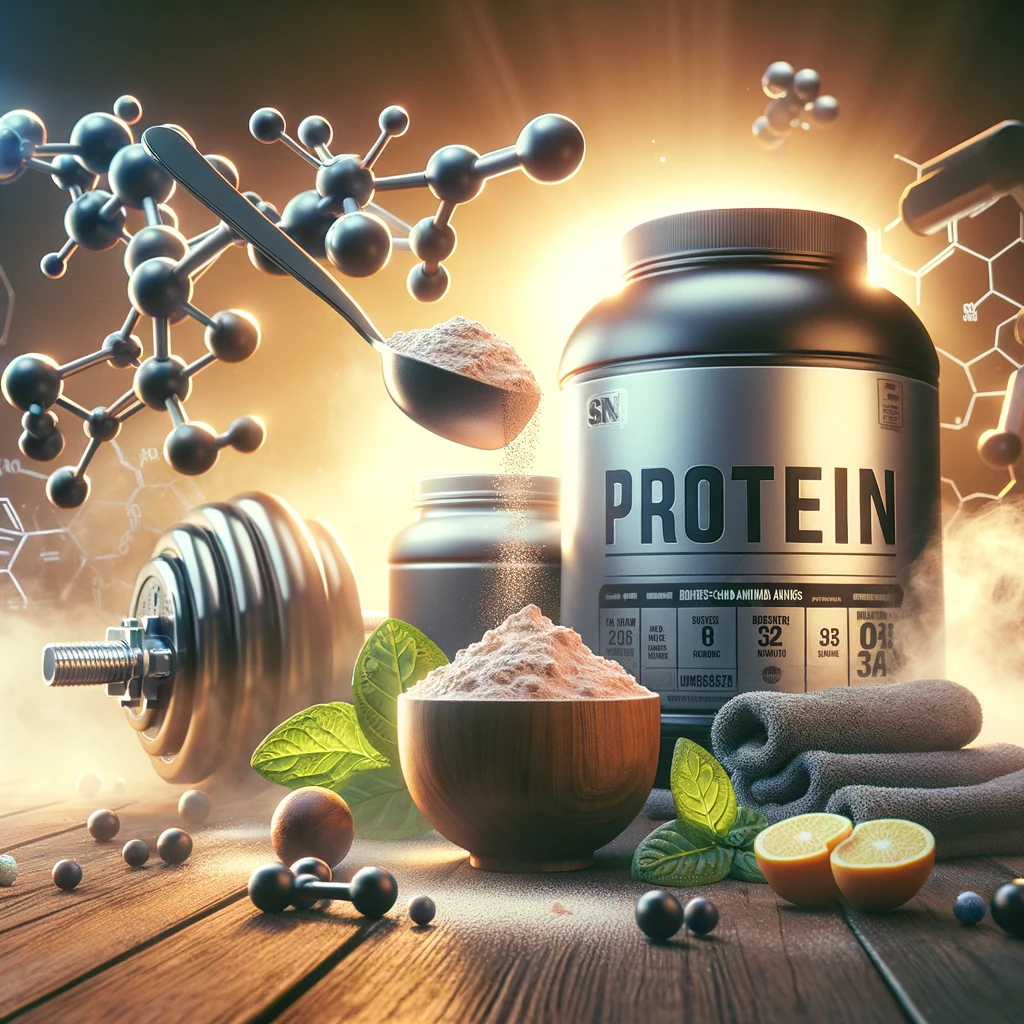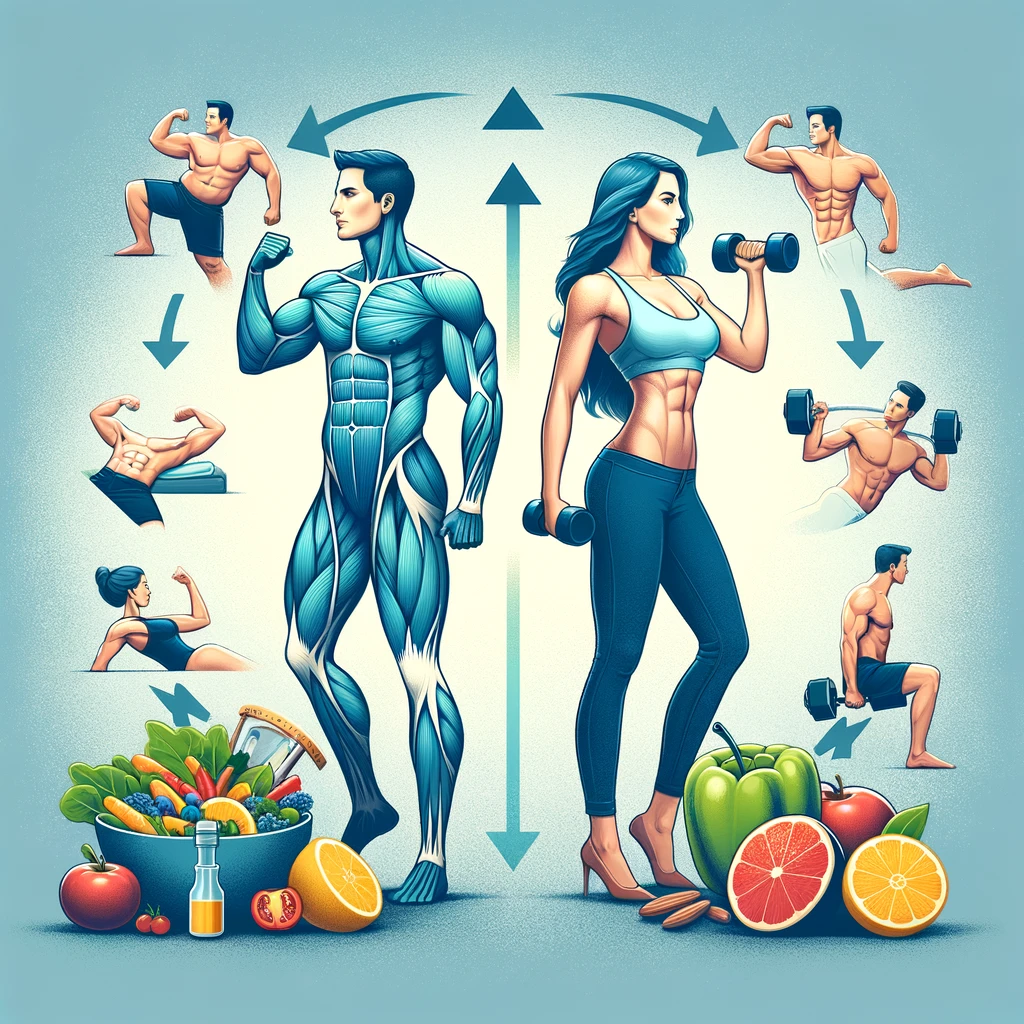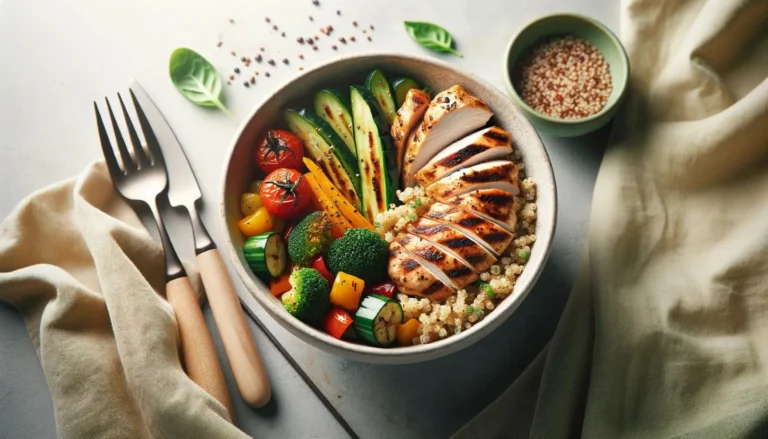To Lose Weight while Gaining Muscles is not a Miracle Anymore!
Hello everyone! Do you want to have a toned and strong body while also building some muscle? You might have heard that it’s like choosing between pizza and ice cream, that you can’t have both. However, what if we told you that there’s a way to achieve both at the same time? Yes, you can lose weight and gain muscle simultaneously! In this blog, we will explore the science behind body re-composition and provide you with research-backed methods that actually work.
1. Understanding the Science
To understand the weight loss journey, imagine a seesaw with calorie intake on one side and calorie burn on the other. When you consume fewer calories than you burn, your body taps into its stored energy reserves, mainly fat, to make up the difference, leading to weight loss.
Muscle gain, on the other hand, is like building a house. You need two things: raw materials (protein) and the right tools (strength training). When you eat enough protein and challenge your muscles with exercise, tiny tears occur in the muscle fibers. During recovery, your body repairs these tears, making the muscles stronger and slightly bigger over time. This is called muscle hypertrophy.
Both processes rely on similar resources, particularly protein. This is why some people believe that you can’t do both at once. However, by carefully managing your calorie intake, protein consumption, and workout routine, it is possible to lose weight and gain muscle at the same time.

Can You Put on Muscle in a Calorie Deficit?
Another worth considering question is whether building muscle in a calorie deficit is possible. Well, it depends. While a calorie surplus is generally the best way to gain muscle, it is possible to build some muscle even when you’re in a calorie deficit.
This is particularly true for beginners who can experience “newbie gains” due to their bodies responding more effectively to exercise, leading to some muscle growth even when in a deficit.
Another way to build muscle in a calorie deficit is to have a higher body fat percentage. In this case, your body can use the stored fat for energy, which can potentially lead to some muscle growth while losing fat.
2. Optimizing Your Diet
Let’s get real! Building a dream physique is not just about sweating and sacrificing. It requires a two-pronged approach that involves both exercise and diet. While exercise provides the stimulus for muscle gain and weight loss, a proper diet rich in protein is the fuel that powers these processes. Protein acts as the building blocks for muscle and keeps you feeling fuller for longer, aiding fat loss.
Although protein is the champion nutrient for building muscle, a common question is how much protein is required to lose weight and gain muscle. A good starting point is aiming for 0.8-1 gram per pound of body weight daily. However, this can vary depending on factors like activity level. But don’t forget the supporting cast! Healthy fats, complex carbs, and micronutrients are all crucial for a balanced diet that fuels your body’s re-composition goals.
Healthy fats are like the essential support crew, helping regulate hormones, keeping you feeling full, and providing sustained energy. On the same page, complex carbs act as the steady stream of fuel powering your workouts.
Now that you understand the importance of protein and other key nutrients, let’s explore some diet plans to lose weight and gain muscle that can fuel your body’s re-composition journey.
| Time of the day | Meals |
|---|---|
| Breakfast Champion | Scrambled eggs with spinach and whole-wheat toast topped with avocado. |
| Lunchtime | Grilled chicken breast with brown rice and roasted vegetables. |
| Dinner Delight | Salmon with quinoa and roasted sweet potato |
These meals provide protein, fiber, vitamins, complex carbs, and healthy fats. For further exploration of personalized meal plans, check out the USDA MyPlate resource for a foundation in healthy eating.
Pro Tip: While you’re working on losing weight and building muscle, remember that you don’t have to completely give up on your fast food cravings. Contrary to common perceptions, you can still enjoy fast foods while feeding your body the proteins it needs. Check out our Ultimate Guide to Healthy Fast Foods to learn how you can satisfy your fast food cravings with nutritious, protein-rich options that support your fitness goals.
3. Designing Effective Workouts to Lose Weight and Gain Muscle
Designing an effective workout plan to lose weight and gain muscle requires a combination of resistance training and cardiovascular exercises. A one-size-fits-all approach doesn’t work for everyone. To create a balanced routine, follow these steps:
Resistance Training: The Foundation of Muscle Development
Resistance training is essential for toning and building muscle mass. Include strength sessions 2-3 times a week, focusing on key areas such as legs, chest, back, shoulders, and core. Incorporate weights or bodyweight exercises to challenge your muscles, promoting strength and lean muscle mass.
Cardiovascular Exercise: The Key to Burning Calories
Cardio is crucial not only for burning calories but also for improving heart health and stamina. Aim for 2-3 moderate-intensity cardio workouts weekly. Options like brisk walking, swimming, or cycling can be enjoyable and effective.
A Sample Workout Plan:
To kickstart your journey, here’s a foundational workout plan. Aim for 2-3 sets of each exercise, performing 8-12 reps, with brief rest intervals.
Day 1: Lower Body Focus
- Squats: Use bodyweight or add light weights for an extra challenge.
- Lunges: A staple for leg and glute development.
- Deadlifts: Start with bodyweight to master the form.
- Calf Raises: Strengthen the lower legs and improve balance.
Day 2: Upper Body Strength
- Push-ups: Modify by dropping to your knees if necessary.
- Rows: Can be done with light weights or even household items.
- Overhead Press: Build shoulder strength with bodyweight or light weights.
- Bicep Curls & Triceps Extensions: Use light weights to tone your arms.
Day 3: Cardiovascular Work
- Dedicate 30 minutes to an activity that raises your heart rate. Whether it’s brisk walking, cycling, or swimming, choose something enjoyable to ensure consistency.
Follow this cycle for a week, then feel free to mix up the exercises, sets, or rest periods to keep your workouts challenging and engaging. For more detailed routines and variations, explore fitness resources and websites like Men’s Health for a wealth of knowledge and inspiration. Remember, the key to success in your fitness journey is consistency and progressively challenging yourself as you get better.
Pair your efforts in muscle building and weight loss with targeted abs exercises. 5 Effective Abs Workout Exercises to Get Six-Pack Abs can help you sculpt your core along with our muscle gain strategies.
4. The Role of Supplementation
In order to lose weight and gain muscle, a balanced diet and consistent exercise are your main arsenals. However, the strategic use of supplements can provide additional support in reaching these dual objectives. Here’s a closer look at the best supplements designed to complement your efforts to lose weight and gain muscle simultaneously.
Protein Powder: The Muscle Nourisher
Protein powder is more than just a convenience; it’s a critical tool in helping you achieve your daily protein targets, especially vital when trying to lose weight and gain muscle simultaneously. It supports muscle repair and growth, offering a fast-absorbing protein source post-exercise, which is key for optimizing muscle protein synthesis during your fitness journey.
Branched-Chain Amino Acids (BCAAs): Recovery Catalysts
BCAAs, with key components like leucine, isoleucine, and valine, are readily absorbed by the body and may play a role in muscle recovery. Leucine is particularly effective in stimulating muscle protein synthesis, aiding in the reduction of muscle breakdown, and promoting the growth of lean muscle mass, essential for achieving a toned physique.

Supplement Wisely
When it comes to using supplements for fitness, it’s important to remember that they should not be used as a replacement for a healthy diet. Instead, they should be viewed as a complement to a well-rounded approach to nutrition and exercise.
5. Calorie Deficit with Nutritional Adequacy
You must know that building muscles while losing fat requires a delicate balance between calorie intake and nutrient needs. To create an environment for fat loss, a calorie deficit is necessary. However, it’s crucial not to restrict calories so severely that you deprive your body of the building blocks it needs for muscle growth.
- Boost the effectiveness of your muscle gain and fat loss routines with the health benefits of clove water. Discover 7 Amazing Benefits of Clove Water to see how this simple drink can support your fitness goals.
The key lies in strategic calorie reduction, aiming for a moderate deficit (around 300-500 calories less than your maintenance level) while prioritizing protein intake (0.8-1 gram per pound of body-weight). This ensures you have enough energy for workouts and provides the essential amino acids needed for muscle repair and growth.
6. Recovery and Rest
While you’re crushing workouts and meticulously tracking calories, your body is working hard behind the scenes to adapt and transform. Therefore, the need for rest and recovery develops. During sleep, muscle tissue repairs and rebuilds stronger, making those challenging gym sessions truly pay off.
When sleep-deprived, your body produces more stress hormones like cortisol, hindering muscle growth and promoting fat storage. Aim for 7-9 hours of quality sleep each night to optimize muscle repair and fat loss. Scheduling rest days between training sessions allow your muscles to recover.
Additionally, managing stress through relaxation techniques like meditation or deep breathing is an important page to turn. Lower stress levels not only improve sleep quality but also help regulate hormones for optimal muscle growth and fat burning.
7. Tracking Progress and Adjusting
Remember! Building muscle and losing fat is a journey; sometimes, the scale isn’t the best indicator of success. Signs of gaining muscle and losing fat indicate you’re on the right track. Here are some of those signs:
- Clothes Fitting Differently in different parts of the body
- Increased Strength of your muscles
- Improved Body Definition
- Enhanced Endurance
- Positive Body Image
As you progress, adjusting your diet and workout plan is essential to keep challenging your body. If you’re not seeing the results you expected, consider these factors:
- Are you adhering to your calorie goals and protein intake? Minor adjustments might be needed.
- Is your workout challenging enough? Gradually increase weight, reps, or sets to keep stimulating muscle growth.
- Are you getting enough rest and sleep? Prioritize recovery for optimal results.
Track your progress with photos, measurements, and how you feel. Use this information to fine-tune your plan and keep yourself motivated on your body re-composition journey!
Conclusion
Building a healthier you isn’t about quick fixes or fad diets. It’s about achieving sustainable weight loss and muscle gain through a balanced approach. By incorporating the key takeaways from this blog—a protein-rich diet, a well-structured workout plan, and prioritizing rest and recovery—you’ll equip your body for the amazing transformation to lose weight and gain muscle simultaneously.
Remember, progress takes time, and consistency is the key. Celebrate the non-scale victories like increased strength and improved body definition, and don’t get discouraged by setbacks. Embrace a holistic approach to fitness and nutrition, and watch yourself transform into a healthier, stronger you, both inside and out.





